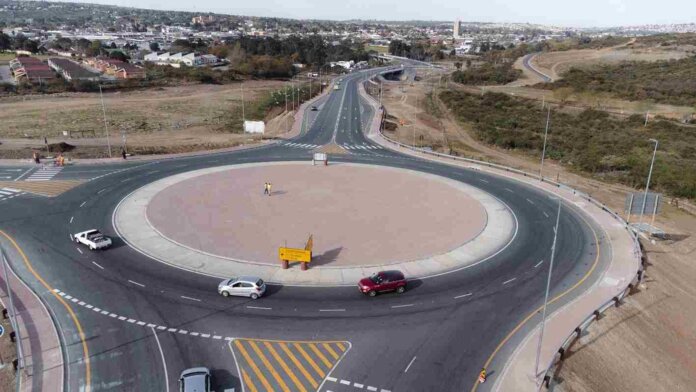This Content is for Subscribers Only
The South African National Roads Agency SOC Limited (SANRAL) has announced the completion of a R500 million upgrade of the N2 section between Qonce and the Green River, following three-and-a-half years of construction.
Motorists travelling along the N2 between Qonce and Ngqushwa in the Eastern Cape will be able to benefit from what promises to be a safer and congestion-free road. The N2 Green River road development project, west of Qonce, boasts three new modern bridges to improve safety.
The 9.2km project is named after the river that runs between the villages of Nonkcampa and Qhaga. The scope of works included extensive road widening, construction of the Tshoxa 1 bridge, the Tshoxa 2 bridge over the Tshoxa River, a new wider bridge over the Buffalo River, a cattle underpass as well as pedestrian walkways. This is in line with SANRAL’s strategic pillar of road safety which provides for safe road infrastructure.
Two new traffic roundabouts were constructed at the N2/R63 intersection and N2/Engen access way to minimise congestion while geometric safety improvements were undertaken at intersections.
The man behind ensuring its timely delivery is Qumbu-born SANRAL Southern Region Project Manager, Athi Kiviet. He obtained his B.Tech in Civil Engineering from the University of KwaZulu-Natal and is looking forward to pursuing studies in management programmes so that he will be able to manage projects and people better.
“When I was in high school there was construction taking place near my home and I became fascinated with seeing these guys wearing shorts and helmets. This is what sparked my interest to know what they were doing. I then pursued my studies towards civil engineering based on that experience,” said Kiviet.
The project was designed by GIBB Consulting Engineers and was contracted to WBHO (Pty) Ltd for construction. It is set to reduce travelling time between Qonce and centres in Makhanda and Gqeberha while addressing the Eastern Cape’s infrastructure backlog. Construction began in January 2021 over a period of 33 months which included a three-month mobilisation period.
Kiviet is proud to talk about the award-winning 140m long Tshoxa bridge, standing 18m above Tshoxa River and a railway line with a railway bridge, an accolade for SANRAL which also forms a crucial part of broader road improvement.
“One of the highlights of the project is Tshoxa 1 bridge which was entered for the South African Institute of Civil Engineering (SAICE) competition and which won first place in the design category. It’s one of the things that has motivated me, that a project I had overseen won an award on a national level,” he said.
The Tshoxa 1 bridge’s sustainability is highlighted by its innovative concrete mix design which reduced the environmental impact by eliminating dune sand from the mixture, saving approximately 13 800 tons of sand. It blends into its rural surroundings while boasting an elegant concrete finish that enhances its visual appeal.
This SANRAL project is not just about enhancing road safety, it’s a catalyst for socio-economic development in the Buffalo City Metropolitan Municipality. A significant portion of the project’s budget is dedicated to empowering local labour and targeted enterprises.
“In terms of the socio-economic impact, we have done very well. We’ve exceeded the targets set for the project, both on labour and SMMEs. We’ve employed about 340 local labourers and subcontracted more than 65 SMMEs,” said Kiviet.
Although it faced some challenges sourcing labour from designated groups especially military veterans and people with disabilities, Kiviet said they did not despair.
“Through stakeholder engagements we managed to get help from the relevant departments so that we were able to achieve the set targets,” said Kiviet. “In terms of packages for SMMEs, they include the erection of guardrails, gabions and walkways, and were created in such a way that upon completion, the SMMEs could grow to higher CIDB grades.”
SANRAL also provided training to locals and SMMEs to capacitate them to sustain themselves even beyond the project. A few jobs are linked to the Ginsberg Community Development (CD) project, a beneficiary of the SANRAL Green River contract located on the west bank of the Buffalo River.
The CD project includes the tarring of the 3km Ginsberg Road, which begins where the R63 and N2 merge and stretches past the Steve Biko Centre to Sompunzi Street, a stone’s throw from the home of the late Black Consciousness Movement leader, the late Stephen Bantu Biko.
“One of the highlights of the Ginsberg Community Development project is that it employed labour enhanced construction methods to develop labour as well as local SMMEs,” Kiviet added.






